| Vintage Pulp | Jul 31 2014 |

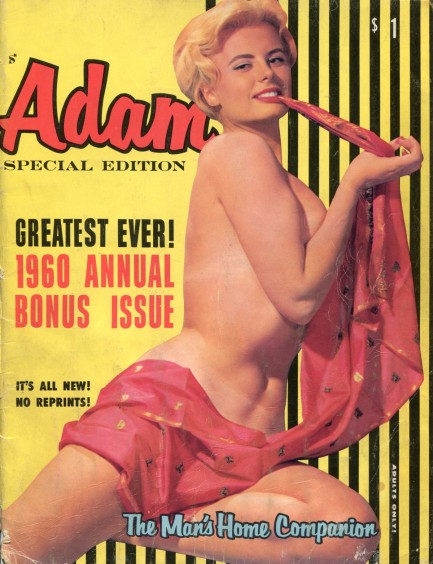
This Adam from 1960 is one of parent company Knight Publishing Corp.’s special annuals and features Lynn Hayward on the cover, plus the similar-looking Sheika Moser on the overleaf, both beautifully photographed by Keith Bernard. Hayward never appeared anywhere again, as far as we can tell, but Moser starred in numerous magazine layouts, including several for Spree, Gala and Eyeful. Inside the magazine you get fact, fiction, humor, and all the other elements that characterize mid-century men’s magazines, including many more women. Among them are Cuban dancer-turned-actress Chelo Alonso, burlesque queen Candy Barr, model-actress Ann Atmar, and others.
On a side note, we haven’t talked about our recent trip to the U.S. yet because we’ve just been too busy, but we did manage to collect quite a few more pulp items you’ll be seeing in the coming weeks. This particular Adam is an internet find, and you can locate it yourself with minimal effort. However, we did buy a dozen actual, physical issues of unrelated-to-the-above, hard-to-find, and never-before-uploaded Australian Adam. The new discovery pushed our issue total for that imprint well above fifty. But those are for later. Today, it’s good old American Adam. We have more than forty scans below for your enjoyment.
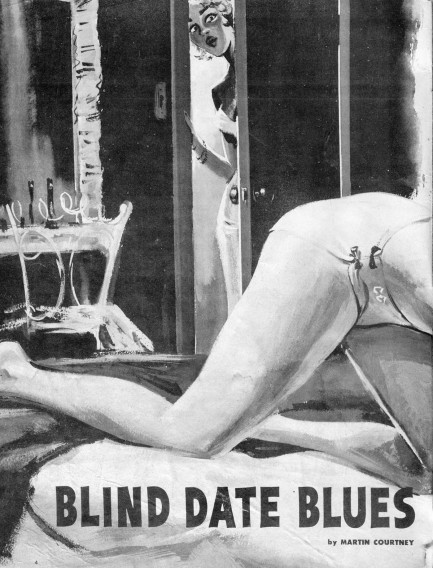
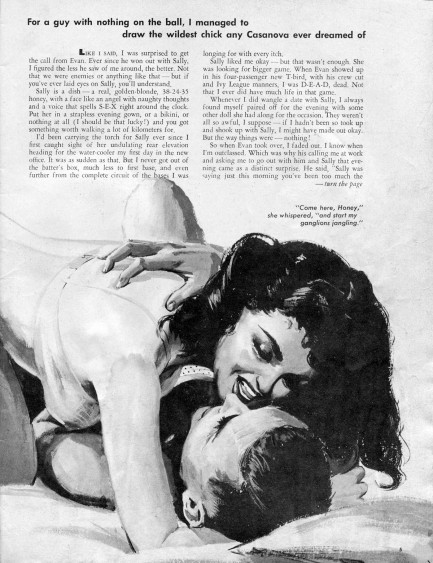

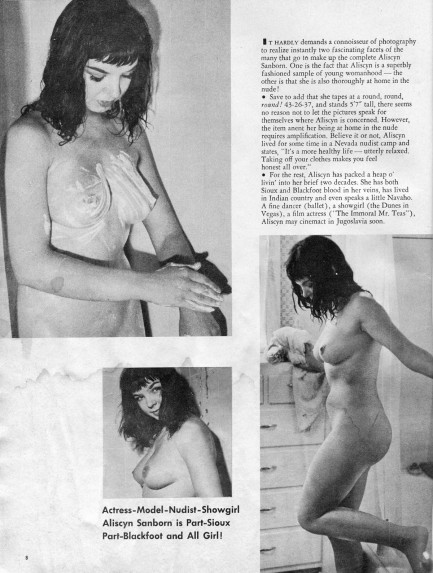

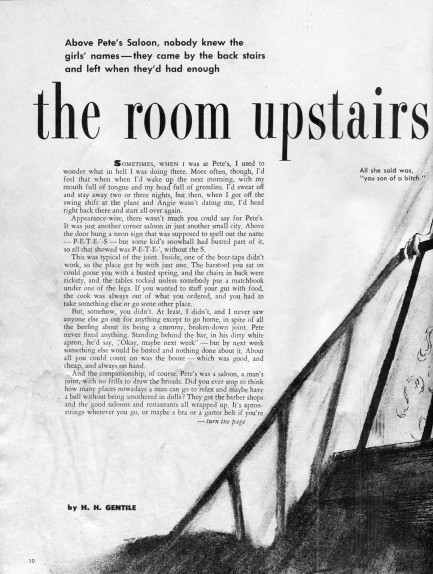
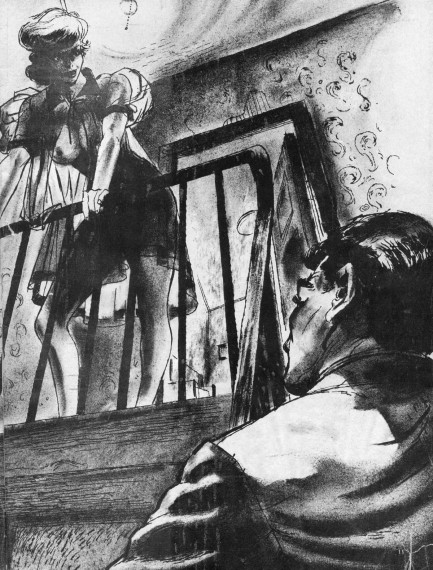
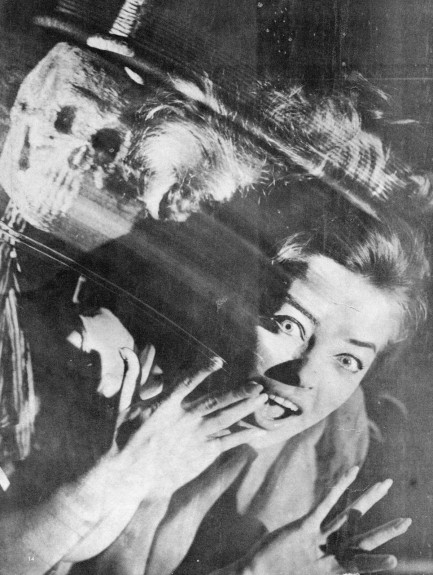
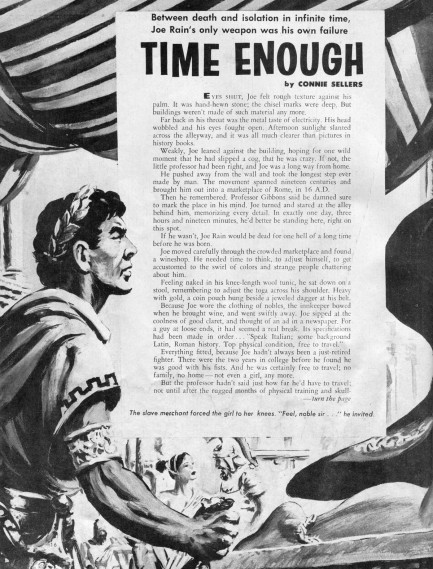
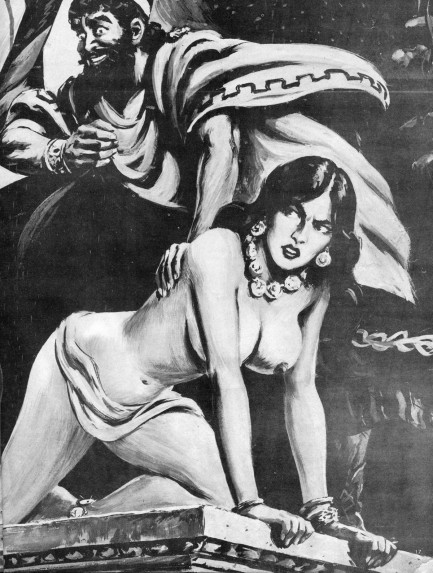
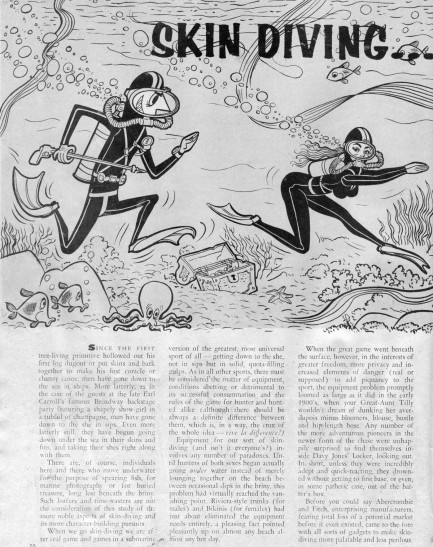
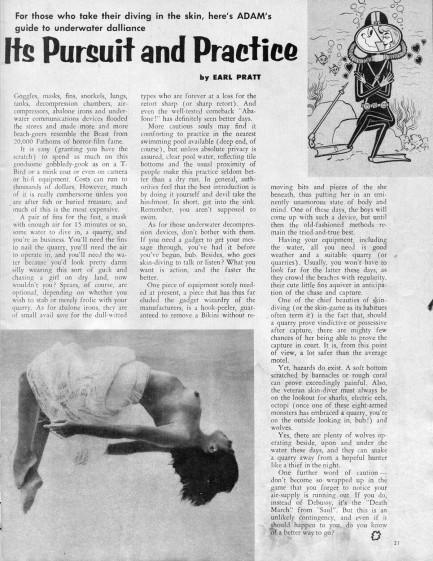
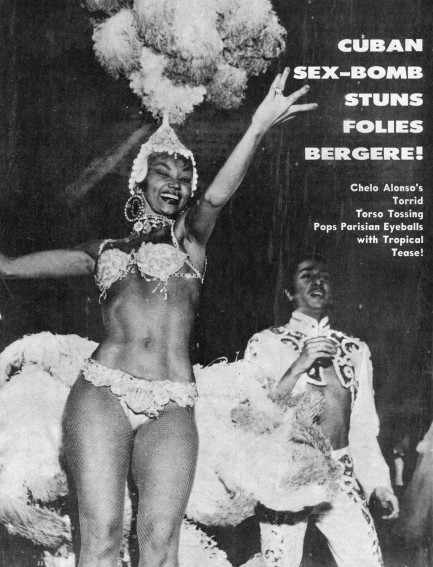
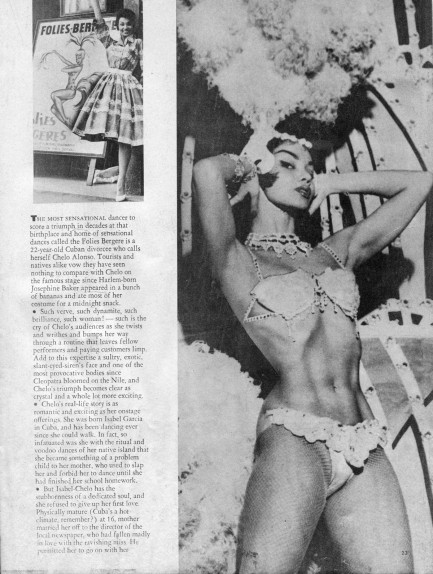
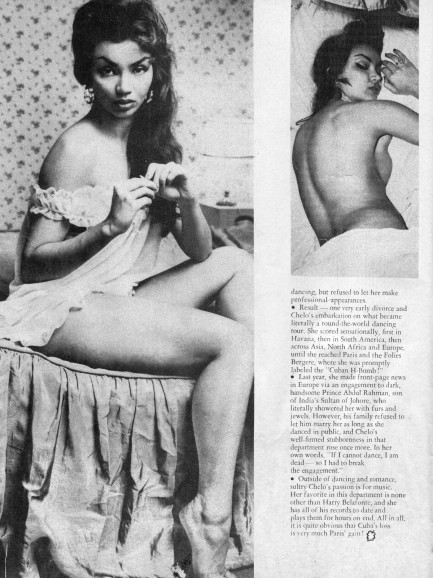
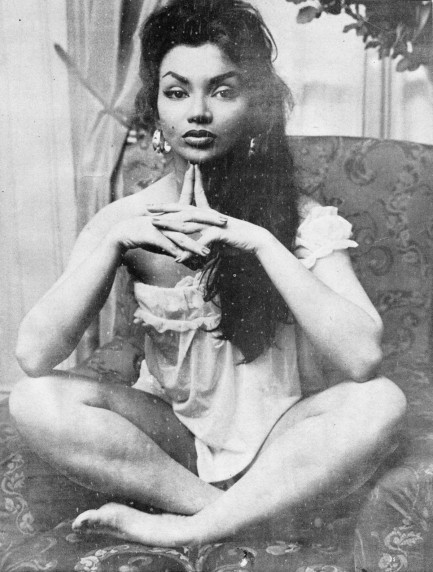
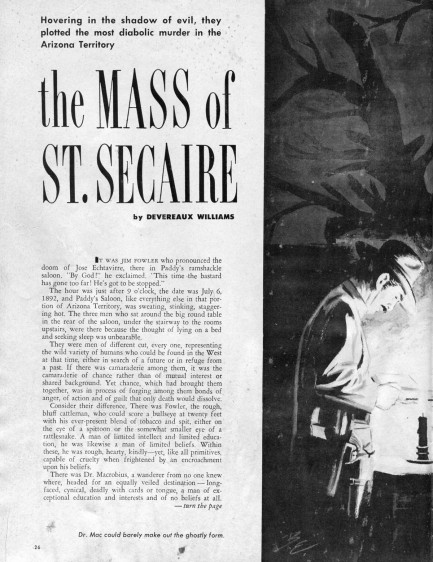
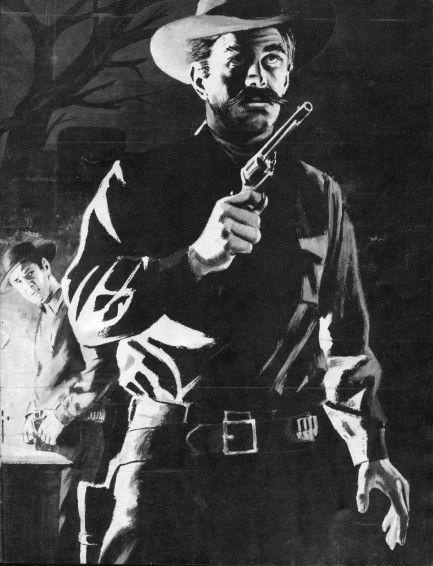
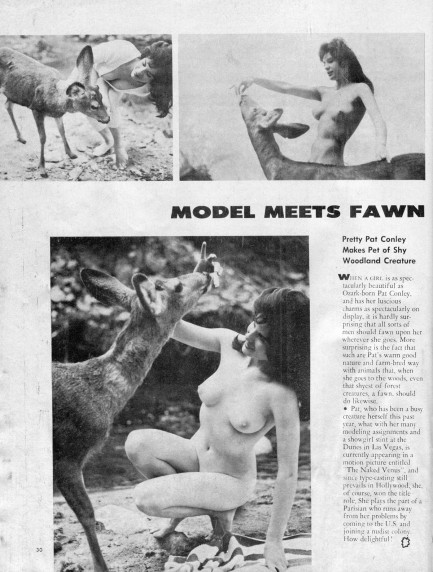

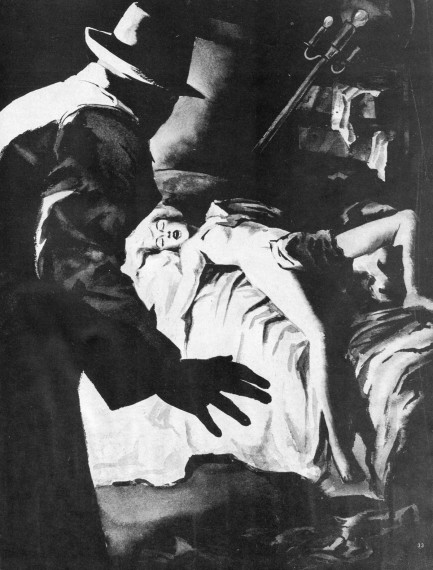
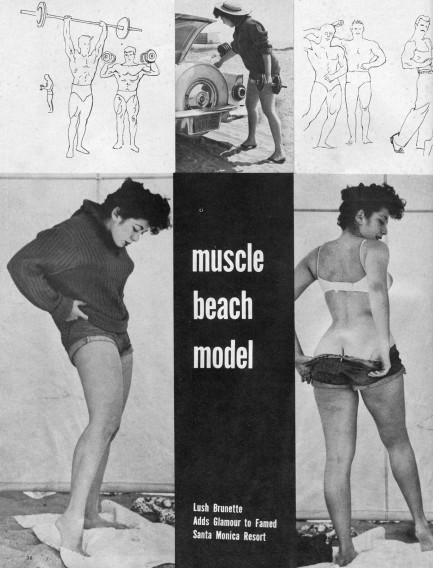
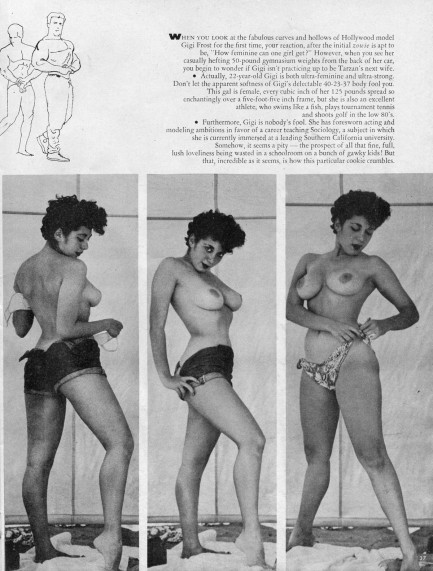

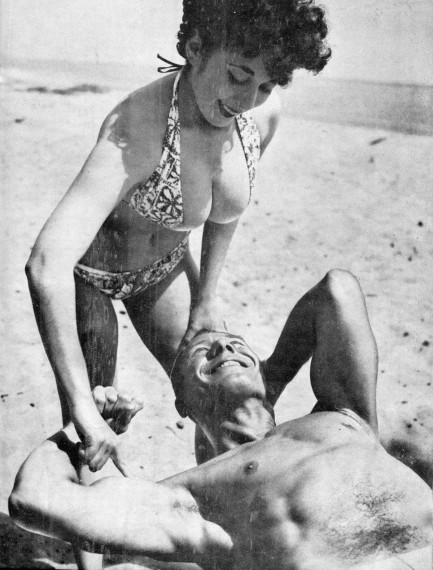
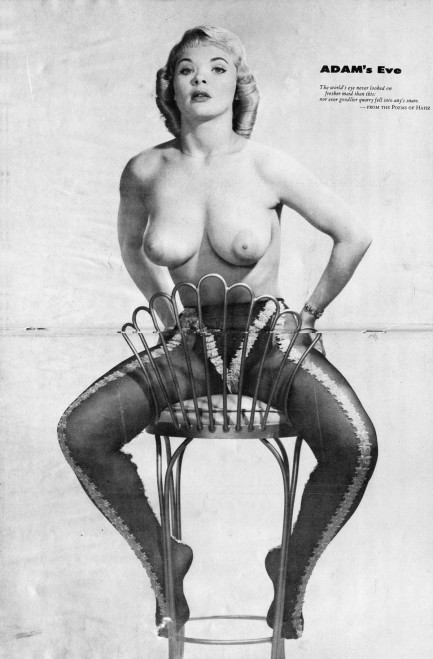
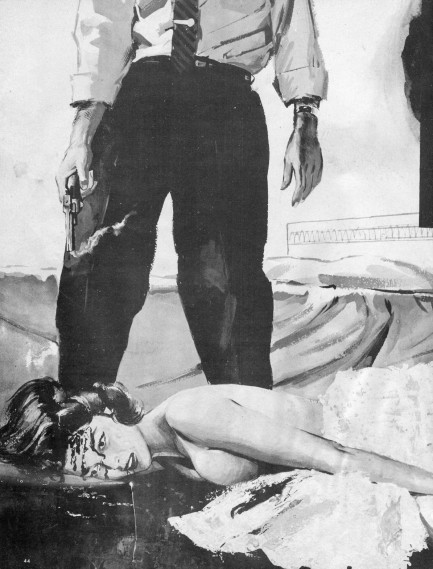
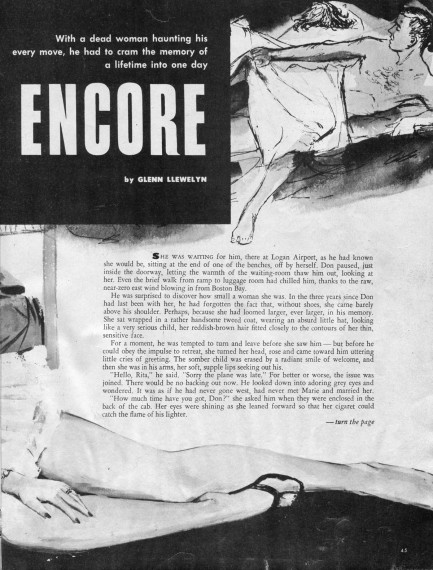
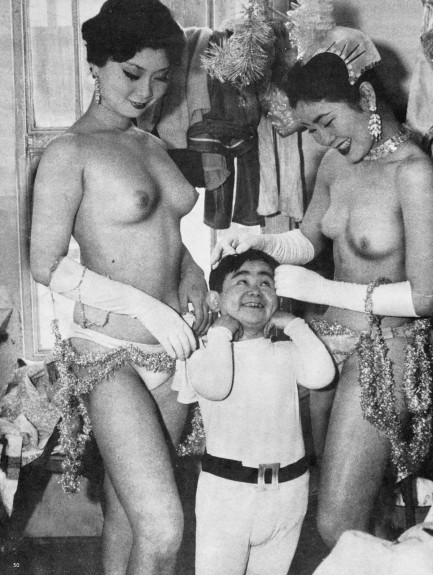
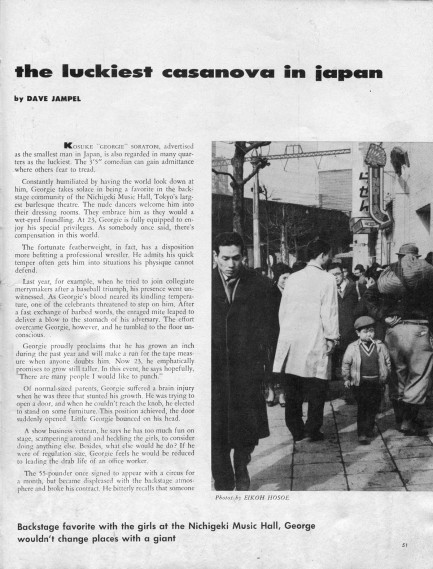
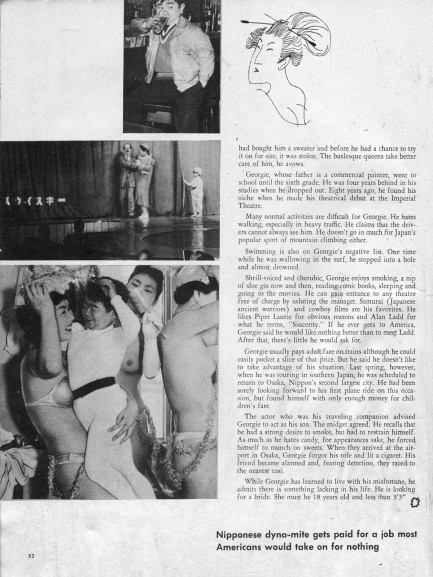
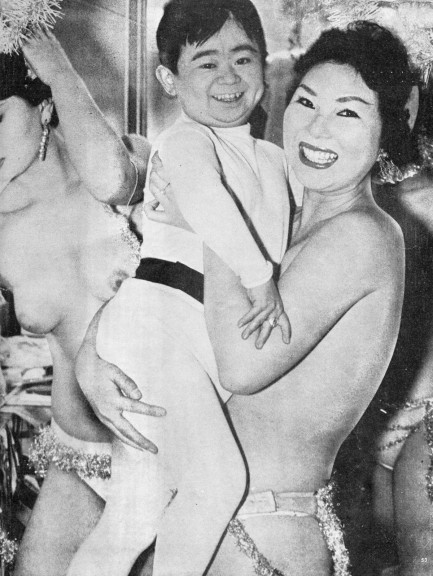
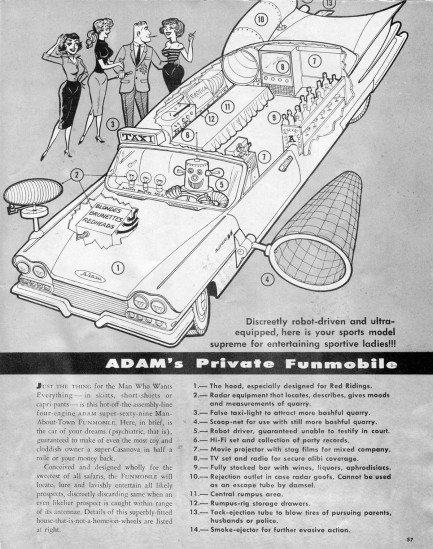

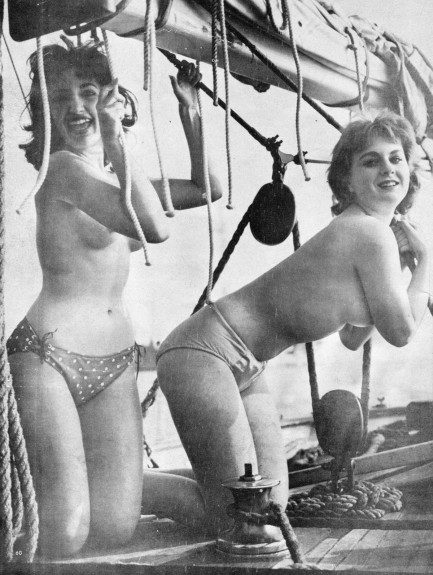
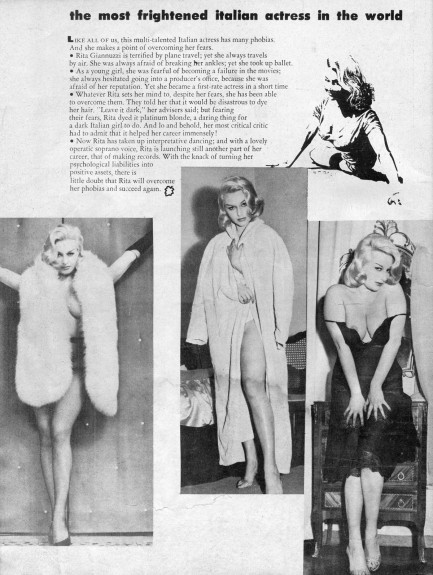
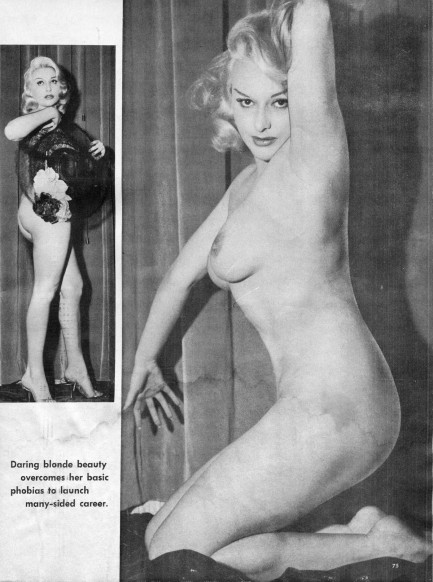
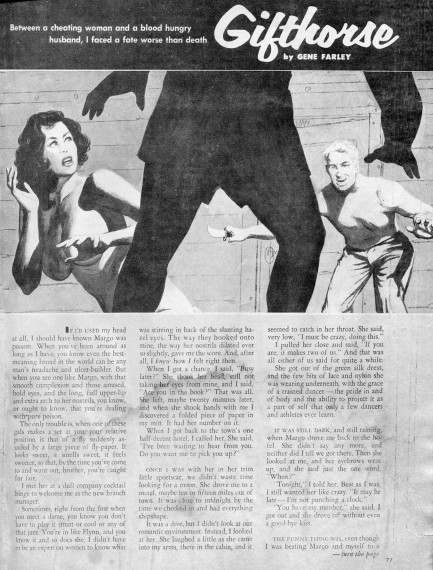

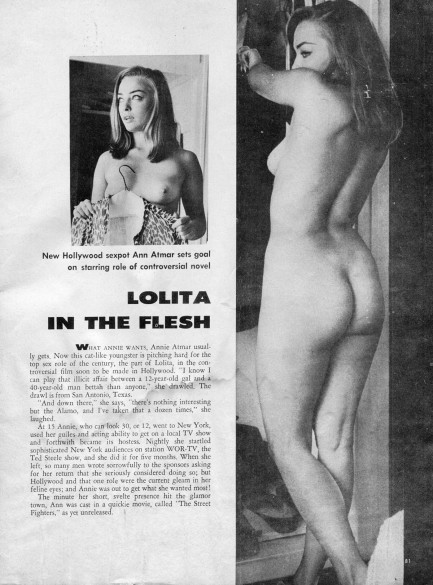

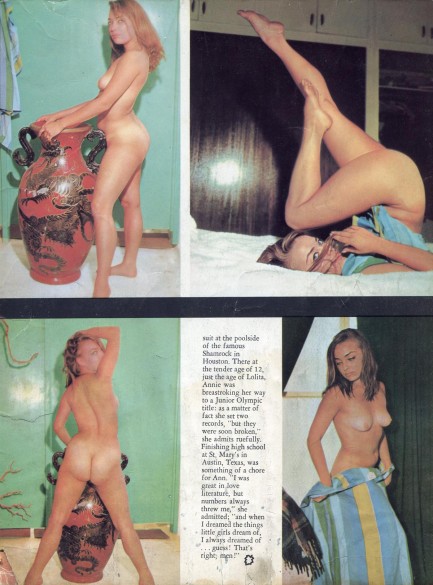
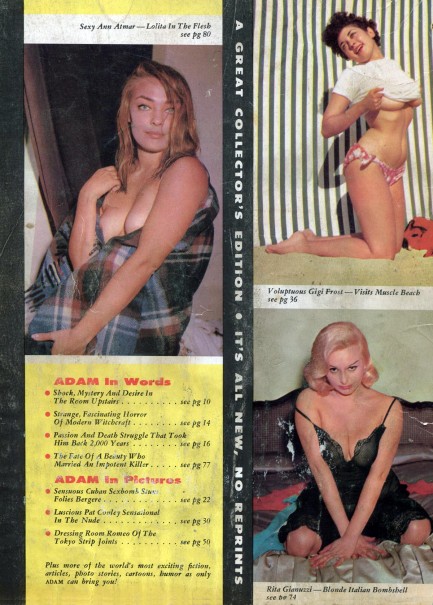
| Intl. Notebook | Politique Diabolique | Nov 22 2013 |

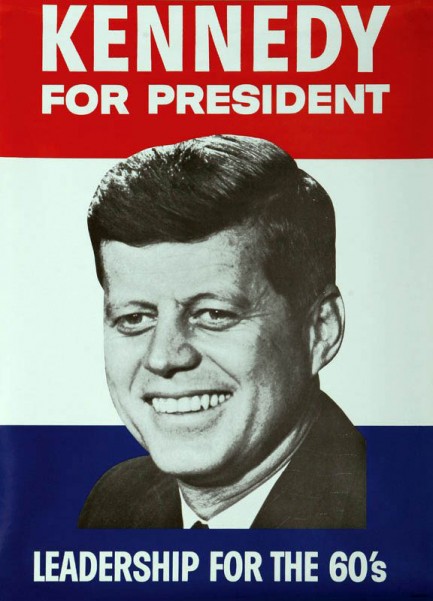
Stories about John F. Kennedy’s assassination have been appearing in the media for several weeks leading up the 50th anniversary of the event, as various outlets try to get ahead of the wave of interest, but we’re purists here, so we’re sharing this poster today, on the actual anniversary of the murder. Let’s get the basics out of the way first. As we’ve mentioned before, a Gallup poll taken days after the killing showed that a majority of Americans believed Oswald was not the only participant. That percentage has gone up since, reaching more than 80%, according to some surveys. That means people who believe Oswald acted with others have always been the majority, and today are the vast majority. That’s something your trusted media outlet always leaves out, doesn’t it? The point is if you think there was a conspiracy, you are the norm, part of an overwhelming norm, rather than some crackpot minority.
It’s an important point because many of the articles published today ask questions like, “Why do people believe in conspiracies?” The problem with that question lies in its framing—it implies that we live in a world that has no or few conspiracies, that it’s silly to believe they exist. That’s very interesting, considering that in the Libor scandal up to 20 major banks conspired to rig interest rates in a $350 trillion derivatives market, that Britain’s spy agency GCHQ conspired to secretly tap into the fiber optic cables that carry the world’s phone calls and internet traffic, that the bank HSBC conspired to launder billions of dollars in South American drug cartel money, that ING conspired to violate sanctions against certain types of business dealings with Cuba and Iran, that News of the World conspired to illegally hack the phones of private citizens, and that Merrill Lynch conspired to deliberately overcharge 95,000 customers $32 million in unwarranted fees. All of these happened in just the last few years.
 To listen to the mainstream media, you’d almost think there weren’t actual criminal proceedings or lawsuits extant in every example we just mentioned. It takes a willful disconnection from reality to deny how prevalent conspiracies are in modern life when hundreds of perpetrators are at this moment sitting as defendants in court because they were caught conspiring. If we want to delve into a few historical examples of conspiracies, then note that the NSA conspired to mislead the U.S. public about the Gulf of Tonkin incident, that American asbestos companies conspired to cover up the truth about the danger of their product, and that in 1962 the U.S. Joint Chiefs of Staff conspired to kill American citizens. That conspiracy took the form of a proposal called Operation Northwoods. In short, American citizens would have been killed in a series of terrorist bomb attacks that would have been blamed on Cuba. Northwoods was approved for implementation by every one of the sitting Joint Chiefs. Really let that sink in. The only reason the American government did not kill American citizens is because John F. Kennedy said no—he wasn’t interested in committing high treason and murder so he could invade Cuba.
To listen to the mainstream media, you’d almost think there weren’t actual criminal proceedings or lawsuits extant in every example we just mentioned. It takes a willful disconnection from reality to deny how prevalent conspiracies are in modern life when hundreds of perpetrators are at this moment sitting as defendants in court because they were caught conspiring. If we want to delve into a few historical examples of conspiracies, then note that the NSA conspired to mislead the U.S. public about the Gulf of Tonkin incident, that American asbestos companies conspired to cover up the truth about the danger of their product, and that in 1962 the U.S. Joint Chiefs of Staff conspired to kill American citizens. That conspiracy took the form of a proposal called Operation Northwoods. In short, American citizens would have been killed in a series of terrorist bomb attacks that would have been blamed on Cuba. Northwoods was approved for implementation by every one of the sitting Joint Chiefs. Really let that sink in. The only reason the American government did not kill American citizens is because John F. Kennedy said no—he wasn’t interested in committing high treason and murder so he could invade Cuba.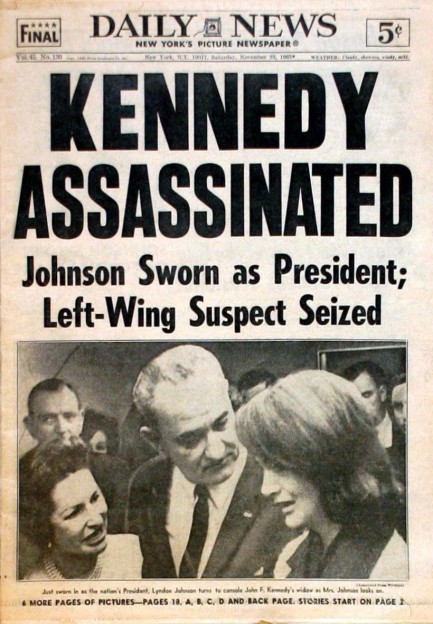 alone. So the question we should be asking today isn’t why so many people believe in conspiracies, but why the mainstream media are so far removed from the factual realities of human, corporate, and political existence, why they are so resistant to the simple truth that conspiracies are how powerful actors circumvent regulations, laws, and democratic rights. Or more to the point, exactly what planet do mainstream journalists live on? Not this one, seemingly.
alone. So the question we should be asking today isn’t why so many people believe in conspiracies, but why the mainstream media are so far removed from the factual realities of human, corporate, and political existence, why they are so resistant to the simple truth that conspiracies are how powerful actors circumvent regulations, laws, and democratic rights. Or more to the point, exactly what planet do mainstream journalists live on? Not this one, seemingly.| Intl. Notebook | Aug 20 2013 |

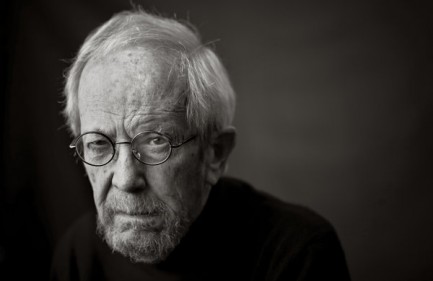
After suffering a stroke a few weeks ago, American author Elmore Leonard died at his home in Detroit this morning. Tens of thousands of words will be written about Leonard’s contributions to literature, but we’ll let him speak for himself in this scene featuring a character named Neely Tucker, a journalist intent on perfectly remembering everything that happens, as he witnesses a brewing confrontation between a Cuban military officer and a tough cowboy in a supper club in Havana, Cuba, 1899:
A couple of years ago, a long article appeared in The Guardian and their book critic pointed out that Leonard was not a great a crime novelist or a great western novelist, but simply a great novelist, one of the best writing in English and had been for at least twenty years. He said a shift had begun to occur in literary circles and critics were beginning to realize nobody else in any genre or branch of literature could do what Elmore Leonard did. Dead today at age eighty-seven.
| Intl. Notebook | May 7 2013 |

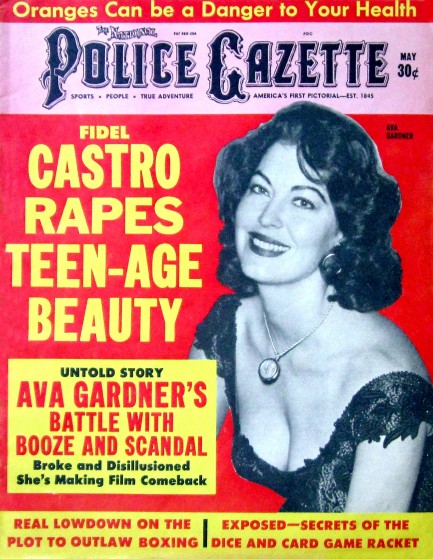
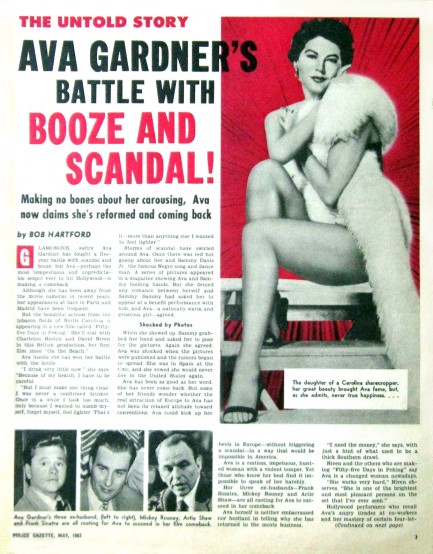
Above are a couple of scans from an issue of The National Police Gazette published this month in 1963 with cover star Ava Gardner. Gardner had been living in Spain and hadn’t been in a movie in three years, but was about to appear in the historical war drama 55 Days at Peking with Charlton Heston and David Niven. The Gazette discusses how she’d gotten fed up with the U.S.—particularly the American press. She had been particularly annoyed by the rumor that she was involved with Sammy Davis, Jr., a story that took flight after several magazines published photos of the two holding hands. When asked why she was returning to Hollywood after being out of circulation for so long, Gardner, in typically blunt fashion, replied, “I need the money.”
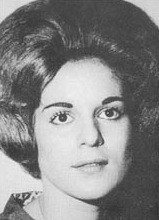 All Castro needs at that point is a Lacoste sweater and a fraternity paddle and his transformation into pure evil would be complete. But as fanciful as the story seems, Lisa really did exist. Her real name was Marita Lorenz and she was Castro’s live-in mistress for several months in 1959. While Lorenz herself never suggested she was ever raped by Castro, the two did have a falling out around the issue of her unplanned pregnancy, which was terminated in its sixth month. Lorenz later said the abortion was forced on her while she was drugged; Castro’s associates claim that she wanted it. Lorenz went on to join anti-Castro activists in the U.S., and on a fundraising visit with the deposed Venezuelan dictator Marcos Pérez Jiménez, became involved with him. She was still traveling to and from Cuba, and was recruited by the CIA for a Castro assassination attempt. But instead of poisoning his food, like she’d been instructed, she abandoned the plot, supposedly because she still felt strongly for him. Lorenz later wrote about all this in two autobiographies.
All Castro needs at that point is a Lacoste sweater and a fraternity paddle and his transformation into pure evil would be complete. But as fanciful as the story seems, Lisa really did exist. Her real name was Marita Lorenz and she was Castro’s live-in mistress for several months in 1959. While Lorenz herself never suggested she was ever raped by Castro, the two did have a falling out around the issue of her unplanned pregnancy, which was terminated in its sixth month. Lorenz later said the abortion was forced on her while she was drugged; Castro’s associates claim that she wanted it. Lorenz went on to join anti-Castro activists in the U.S., and on a fundraising visit with the deposed Venezuelan dictator Marcos Pérez Jiménez, became involved with him. She was still traveling to and from Cuba, and was recruited by the CIA for a Castro assassination attempt. But instead of poisoning his food, like she’d been instructed, she abandoned the plot, supposedly because she still felt strongly for him. Lorenz later wrote about all this in two autobiographies.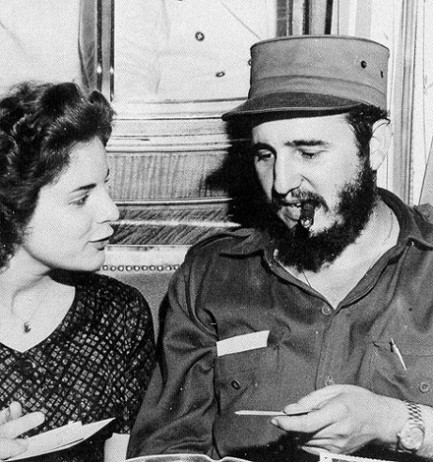 raise a red flag with American congressmen, though these things have no bearing on whether she was telling the truth. It’s interesting though, isn’t it? You’d think that if a single man of his own accord assassinated another man the surrounding circumstances wouldn’t be so… labyrinthine. Yet lurking near the supposed black swan event of the Kennedy killing were double-agents like Lorenz, spooks like E. Howard Hunt, underworld figures like Eladio Ceferino del Valle and others. Just saying. In any case, we’ll have more from the Police Gazette and more on Fidel Castro soon.
raise a red flag with American congressmen, though these things have no bearing on whether she was telling the truth. It’s interesting though, isn’t it? You’d think that if a single man of his own accord assassinated another man the surrounding circumstances wouldn’t be so… labyrinthine. Yet lurking near the supposed black swan event of the Kennedy killing were double-agents like Lorenz, spooks like E. Howard Hunt, underworld figures like Eladio Ceferino del Valle and others. Just saying. In any case, we’ll have more from the Police Gazette and more on Fidel Castro soon.| Vintage Pulp | Apr 22 2013 |

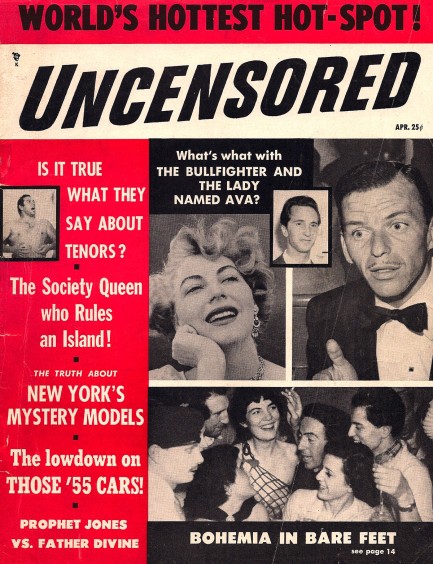
Uncensored returns to Pulp Intl. for the first time in over a year with an issue published this month in 1955. The story of Ava Gardner and Frank Sinatra’s tumultuous relationship (and the Spanish bullfighter who helped ruin it) has been covered numerous times, so no need to get into it again just now, but the photos are certainly worth a look. Uncensored shares other nice images as well. There’s Eartha Kitt (described as not much to look at “unlike such Negro beauties as Dorothy Dandridge and Lena Horne”), Sarita Montiel (who in Mexico was allegedly on the receiving end of a horsewhipping by Miguel Aleman’s jealous wife), and Marlene Dietrich (seen both onstage performing and offstage fulfilling a G.I.’s request for a kiss). The latter photo, from 1945, appeared in Life and many other magazines and remains one of the most famous Dietrich images. So Hollywood starlets take note: if you want millions of dollars in free publicity, no need to get arrested or leak nude photos—just kiss a fan.
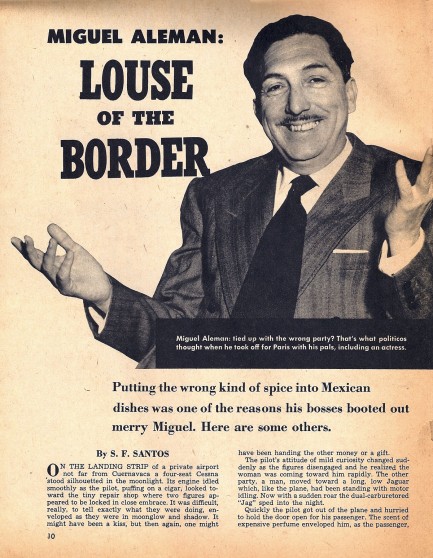
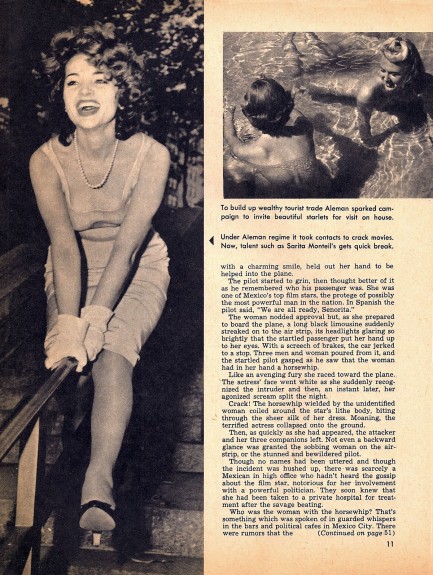
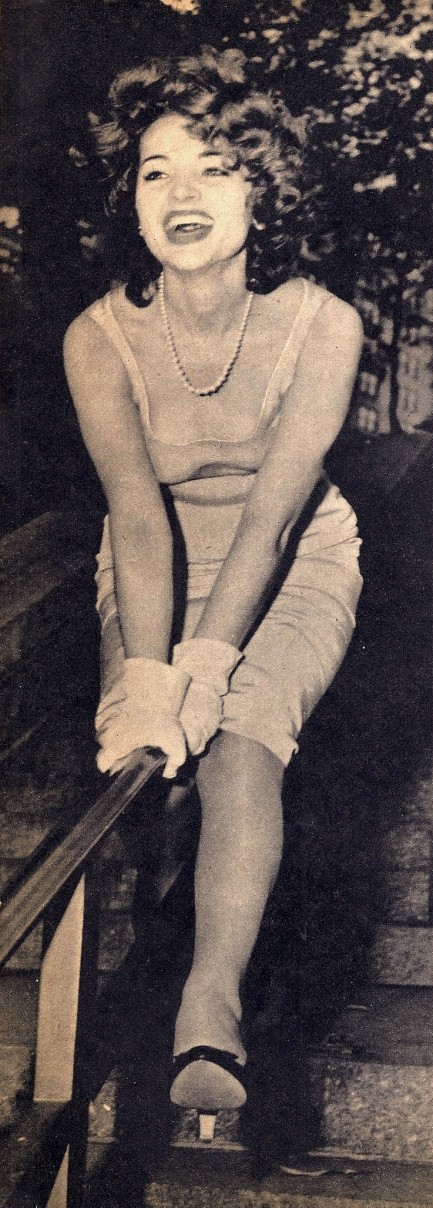
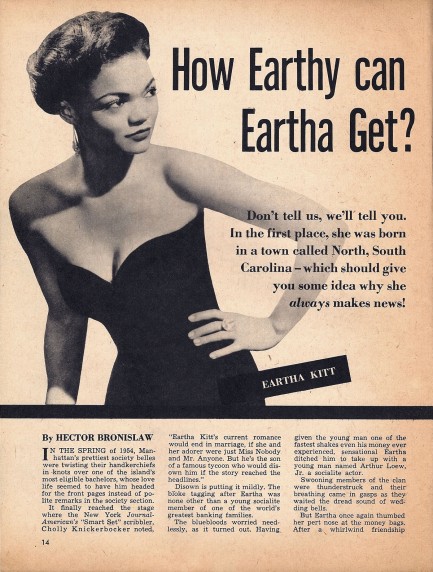
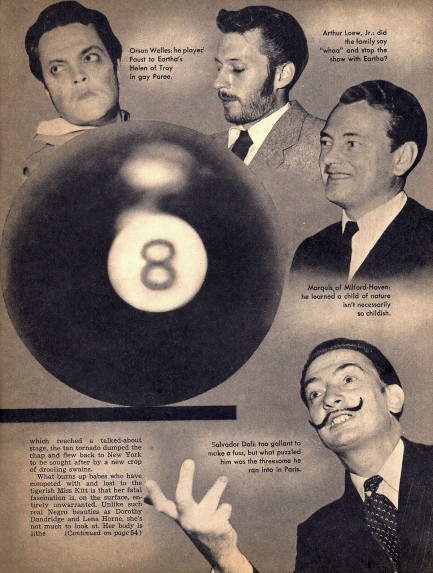
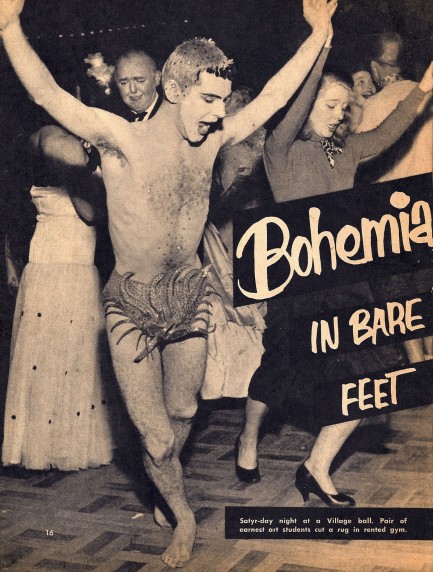
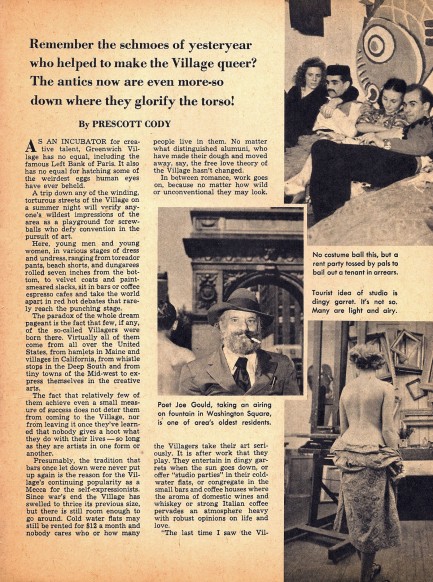

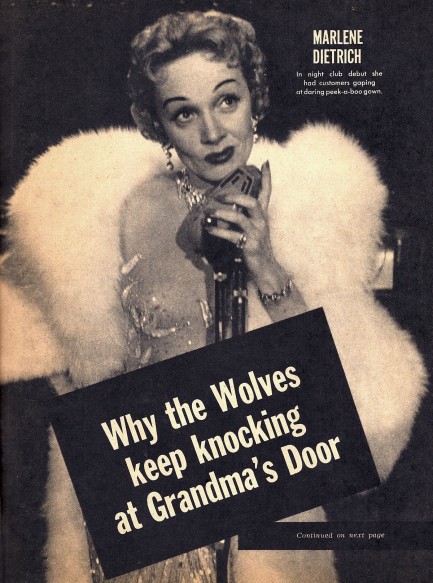
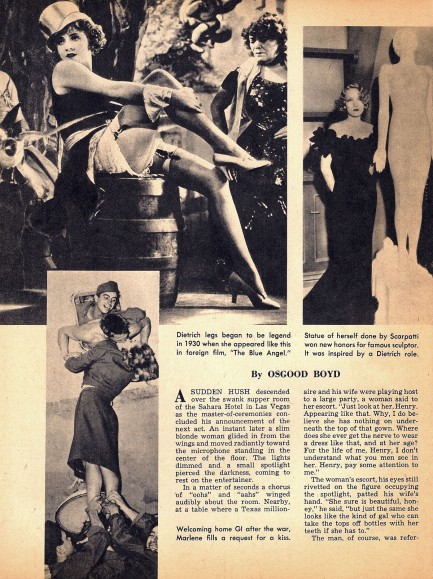
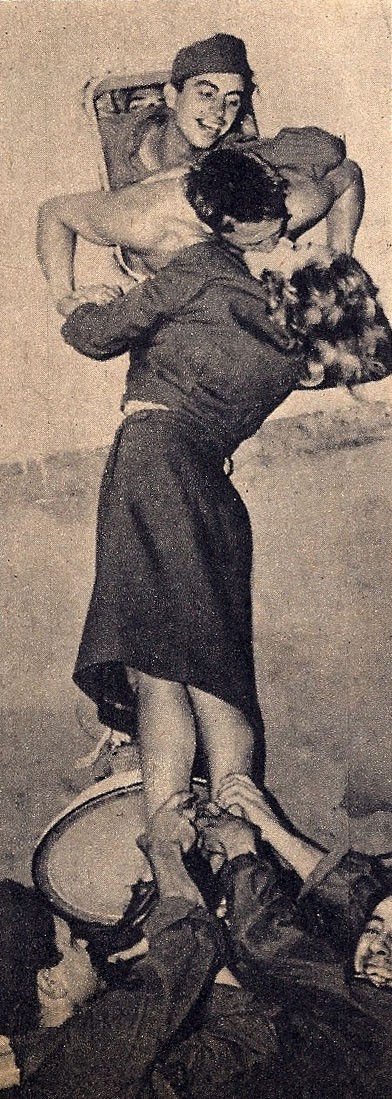
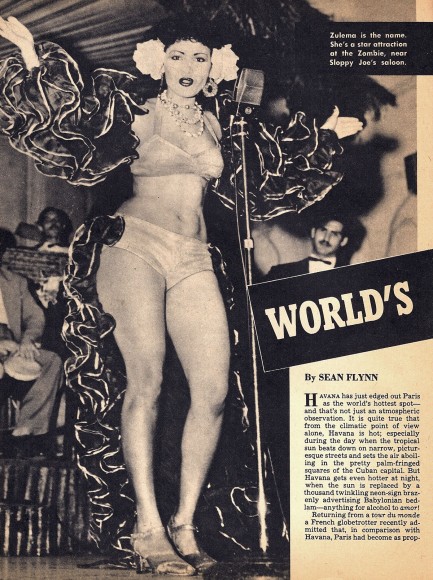
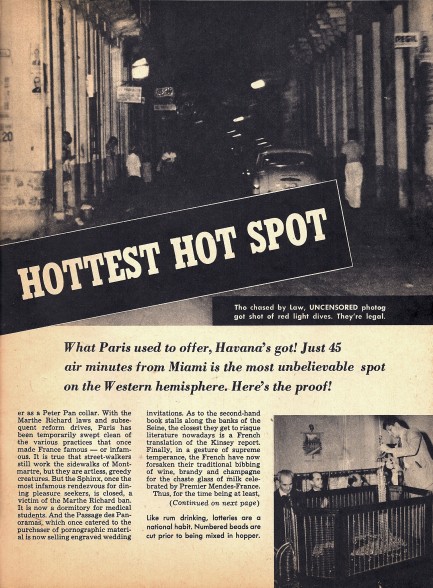
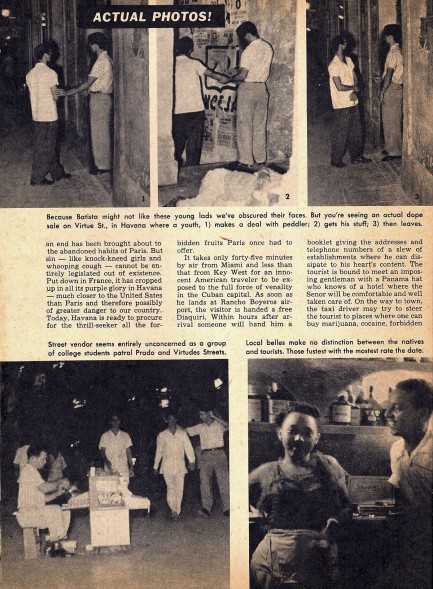
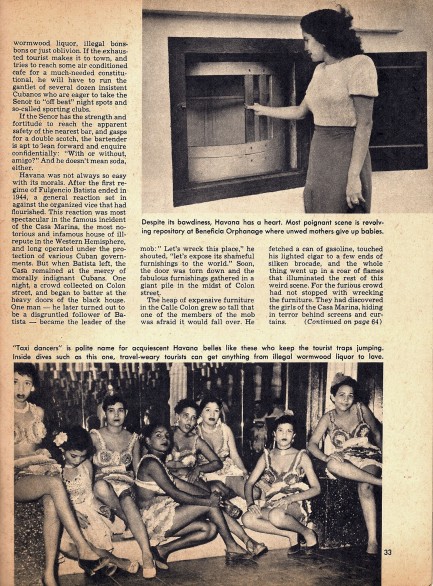
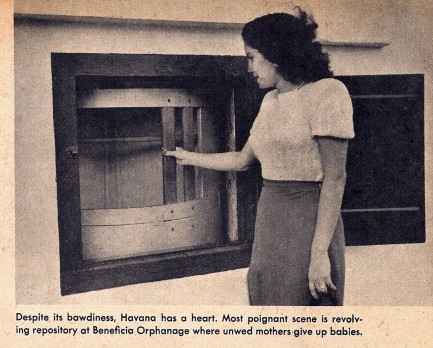
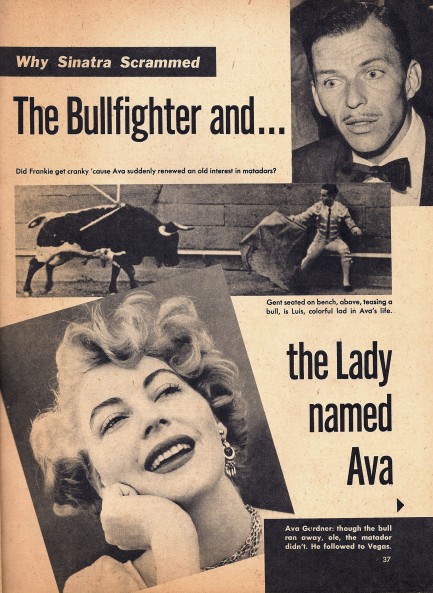
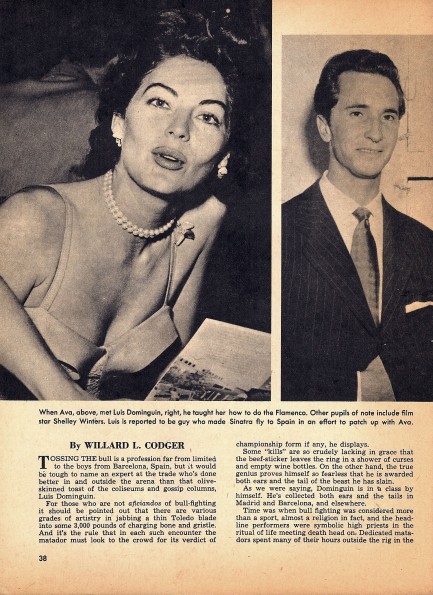

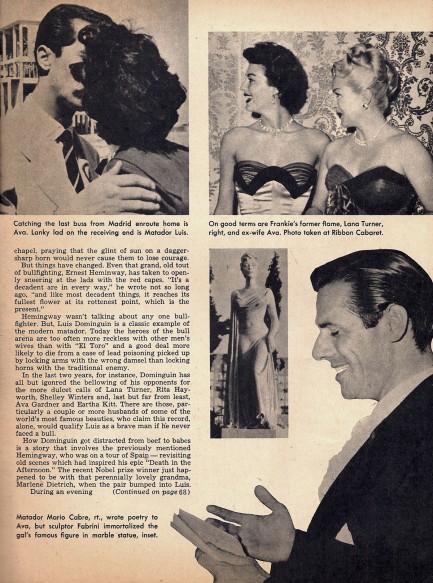
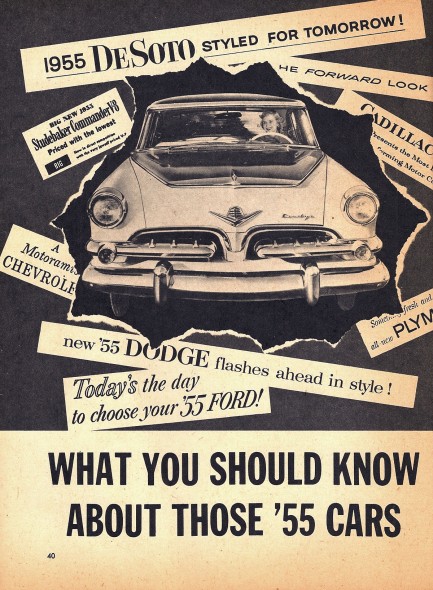
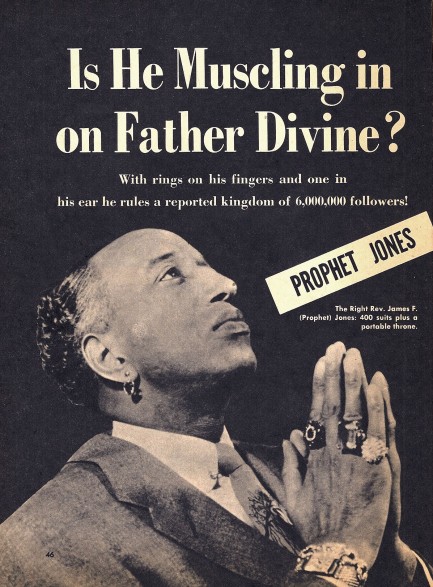
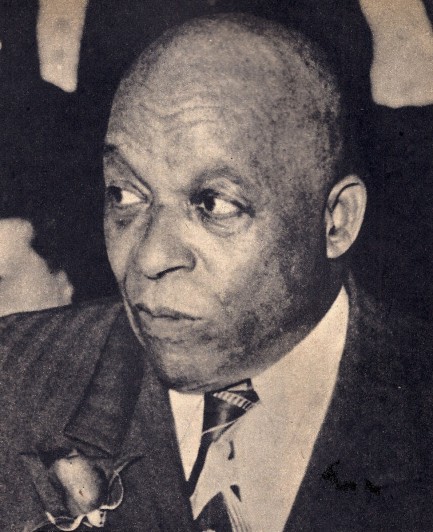
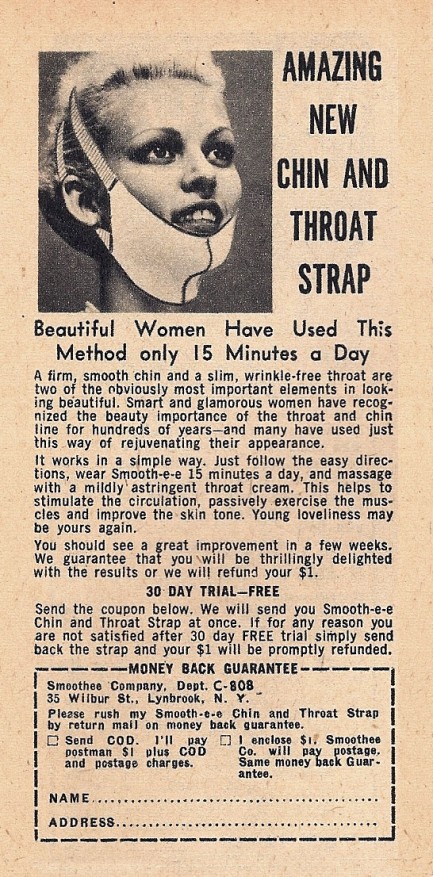
| Intl. Notebook | Dec 6 2012 |

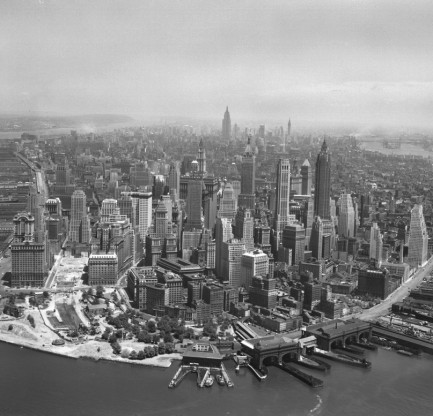
Above is a photo of Manhattan, New York City, in the year 1947, looking from Battery Park toward midtown. Here you see everything—the Staten Island Ferry Building at bottom, Wall Street to the right, the 59th Street Bridge crossing Welfare Island at upper right, and in the hazy distance, the Empire State Building—at that time arguably America’s most recognized symbol. In the aftermath of a war that had destroyed Europe’s and Japan’s industrial capacity, the U.S. was the unquestioned power on the planet, with massive economic might, a military that had taken up permanent residence in dozens of countries, and a growing stock of nuclear weapons. Two years later the Soviets would detonate their first nuclear bomb, shaking the American edifice to its foundation. Meanwhile, all around the world, the seeds of change were taking root. Below is a look at the world as it was in 1947.
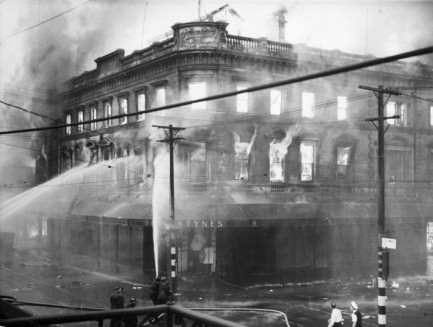
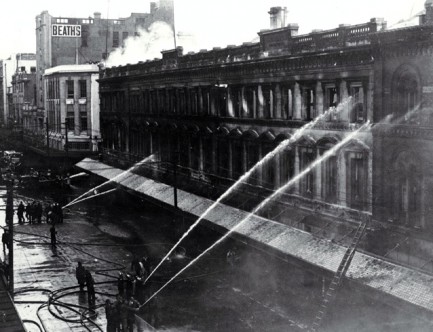
Firemen try to extinguish a blaze in Ballantyne’s Department Store in Christchurch, New Zealand.
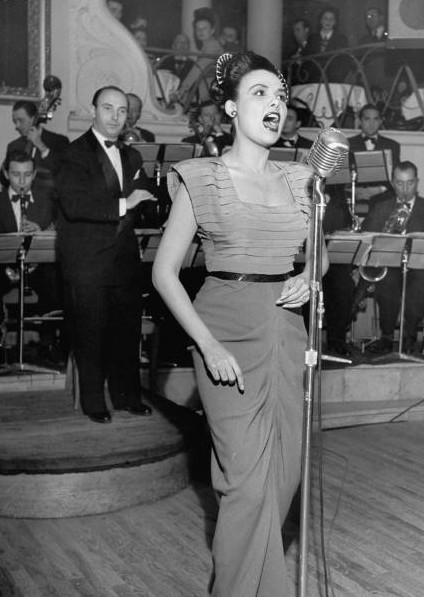
American singer Lena Horne performs in Paris.
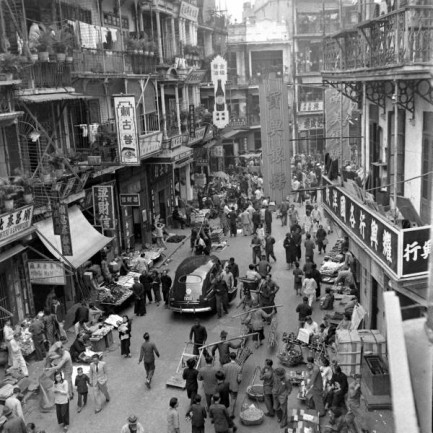
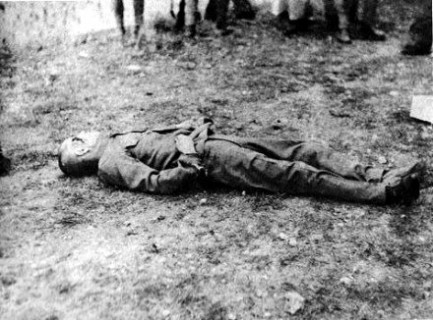
The hustle and bustle of Hong Kong, and the aftermath of the execution of Hisakazu Tanaka, who was the Japanese governor of occupied Hong Kong during World War II.
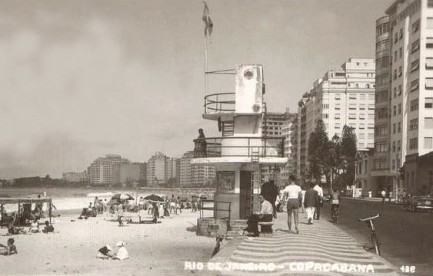
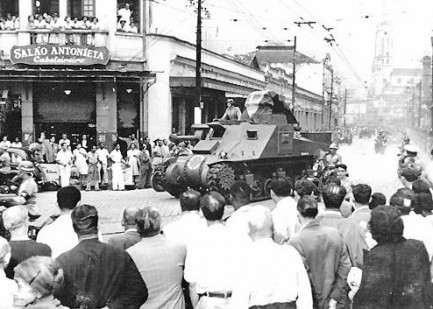
Sunbathers enjoy Copacabana Beach in Rio de Janeiro, and a military procession rumbles along Rua Catumbi.
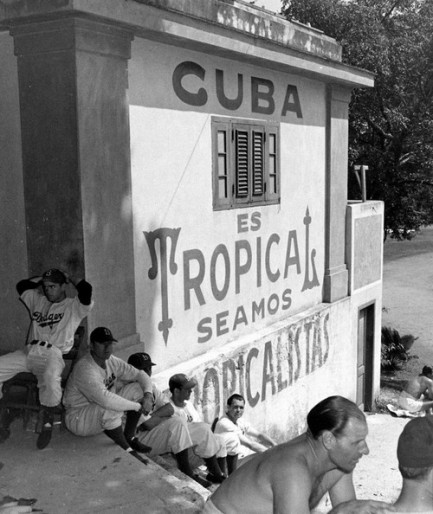
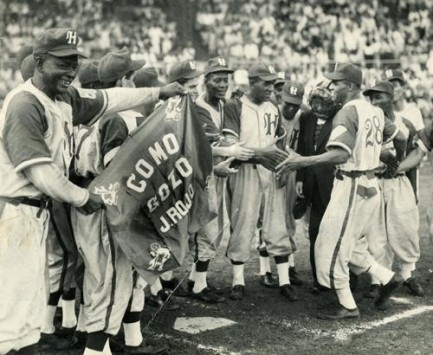
Assorted Brooklyn Dodgers and manager Leo Durocher (shirtless in the foreground) relax at Havana, Cuba’s Estadio La Tropical, where they were holding spring training that year. Second photo, Cuban players for the Habana Leones celebrate the first home run hit at Havana’s newly built Estadio Latinoamericano.
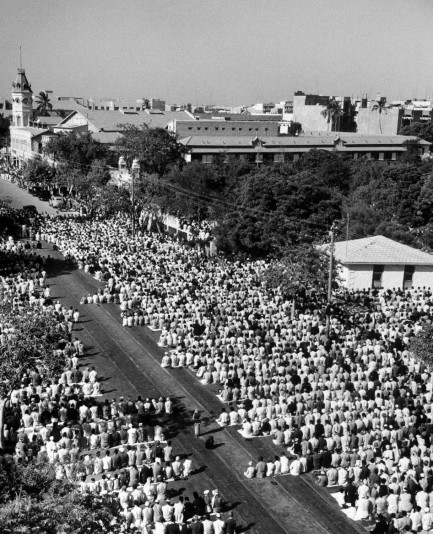
Thousands of Muslims kneel toward Mecca during prayer time in Karachi, Pakistan.
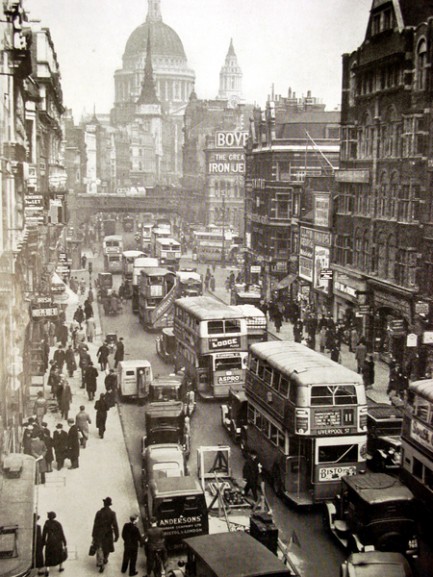
A snarl of traffic near St. Paul’s Cathedral in London.
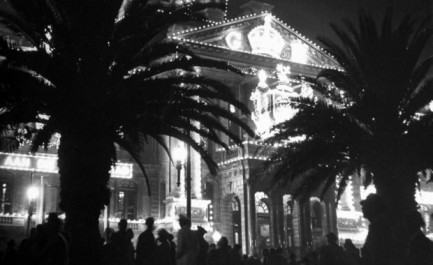
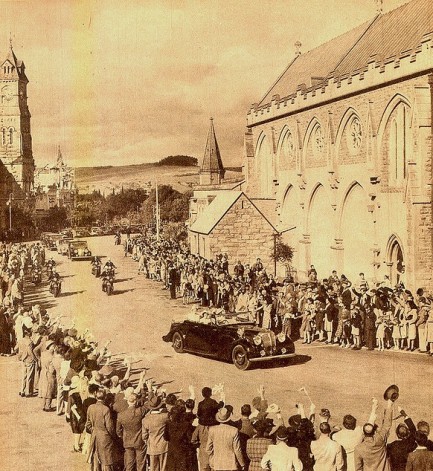
The city hall of Cape Town, South Africa is lit up to celebrate the visit of the British Royal Family. Second photo, during the same South African trip, the royals are welcomed to Grahamstown.
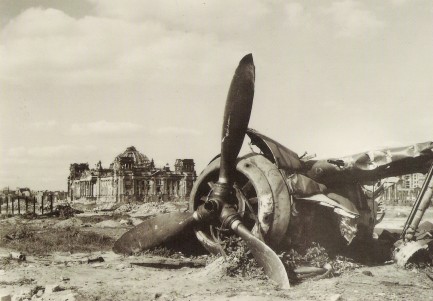

A wrecked fighter plane rusts in front of Berlin’s burned and abandoned parliament building, the Reichstag. Second photo, a shot of ruins in Berlin’s Tiergarten quarter, near Rousseau Island.
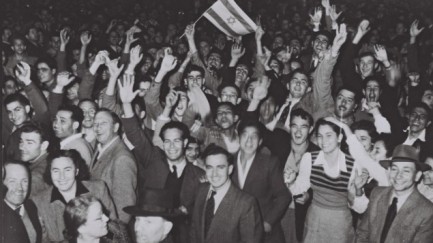
A crowd in Tel Aviv celebrates a United Nations vote in favor of partitioning Palestine.
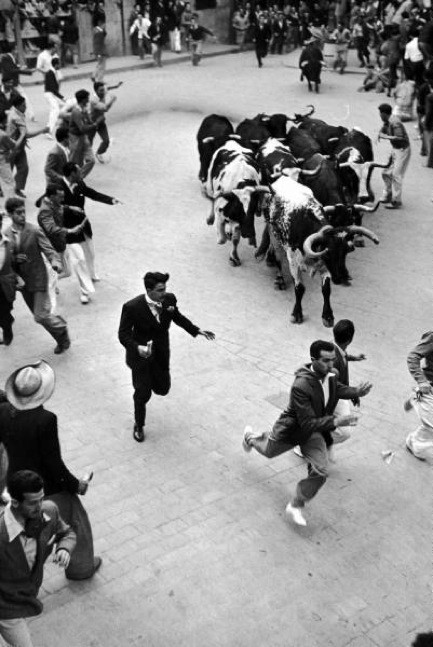
Men and bulls run through the streets of Pamplona, Spain during the yearly Festival of San Fermin.
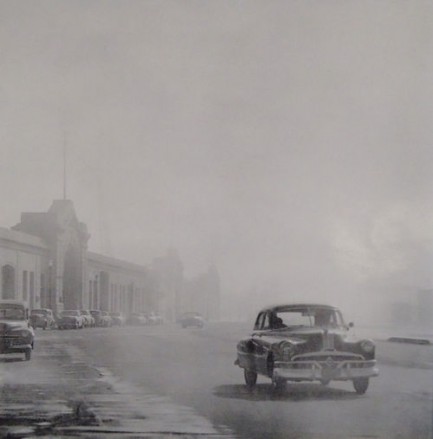
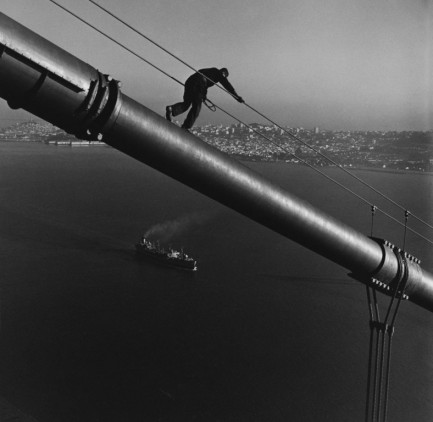
Fog rolls across the Embarcadero in San Francisco; a worker descends from a tower of the Golden Gate Bridge.
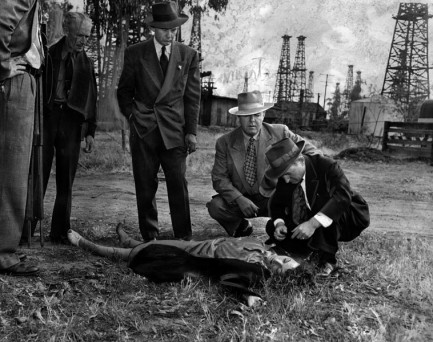
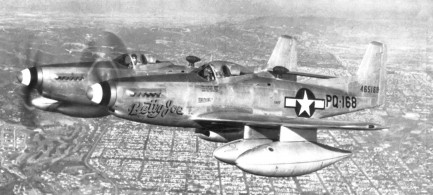
Detectives study the body of a woman found murdered in Long Beach, California. Two P-51 Mustang fighters fly above Los Angeles.
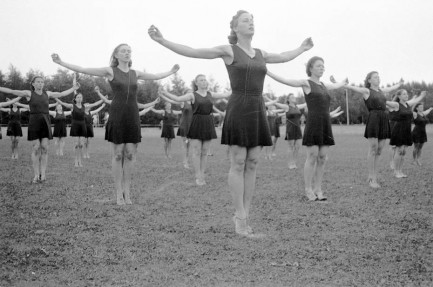
Danish women from Snoghøj Gymnastics School practice in Odense.
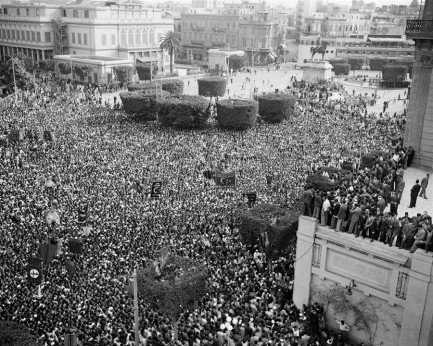
Tens of thousands of protesters in Cairo demonstrate against the United Nations vote in favor of partitioning Palestine.
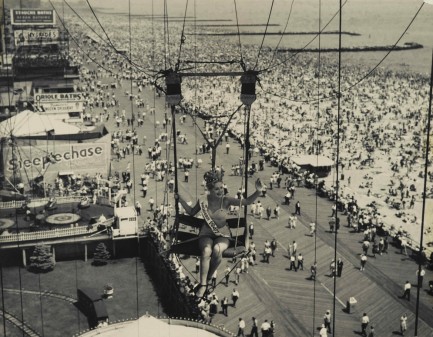
A beauty queen draped with a sash that reads “Modern 1947” is lifted high above the boardwalk in Coney Island, New York.
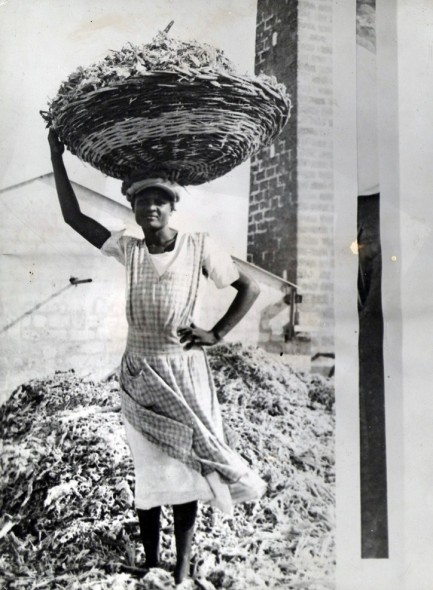
A woman in Barbados holds atop her head a basket filled with fibers meant for burning as fuel.
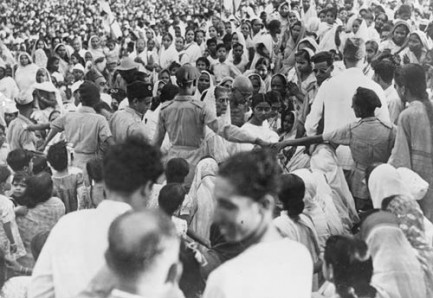
Mahatma Gandhi, his bald head barely visible at upper center, arrives through a large crowd for a prayer meeting on the Calcutta Maidan, India.
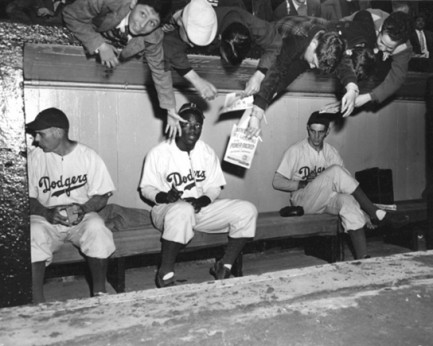
Major League Baseball player Jackie Robinson is hounded for autographs in the dugout during a Brooklyn Dodgers game.
| Vintage Pulp | May 1 2012 |

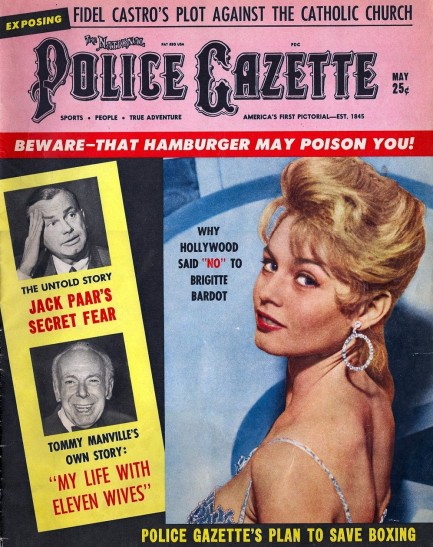
The National Police Gazette reveals on this cover from today in 1960 that Hollywood said no to Brigitte Bardot. The accompanying story quotes an unnamed independent producer, who says that the problem is that Bardot's deficient acting skills limited her to sex kitten roles, but American censorship meant Hollywood couldn't make those kinds of movies. He adds that, at $150,000 salary per project, Bardot is too expensive for Hollywood. A second “well-informed source” tells Gazette that studios are afraid of Bardot’s unbridled sexuality, claiming that her image is “so sexually devastating, that [Hollywood] quivers in fear before the slight, curvaceous French girl with the moist, pouted lips.” So, basically two of three reasons Police Gazette gives for Bardot not featuring in Hollywood films have to do with the influence of legions of American prudes. So maybe it wasn’t really a case of Hollywood saying no to Bardot as much as it was saying yes to sexual repressives. Bardot, it should be noted, simply continued on as the biggest star in the world. Elsewhere in this issue you get the plot-of-the-month attributed to Fidel Castro, tales of Adolf Hitler and Eva Braun, Jack Paar’s fears, and a nice portrait of Babe Ruth and Lou Gehrig. Scans of all that below, and more Gazette coming soon.
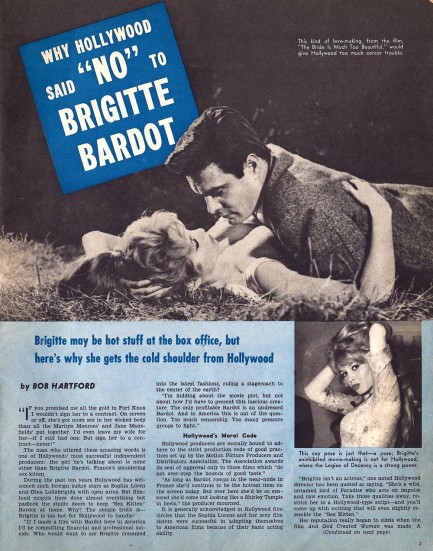
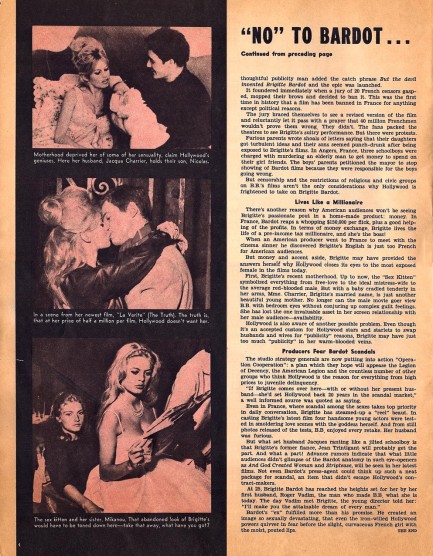
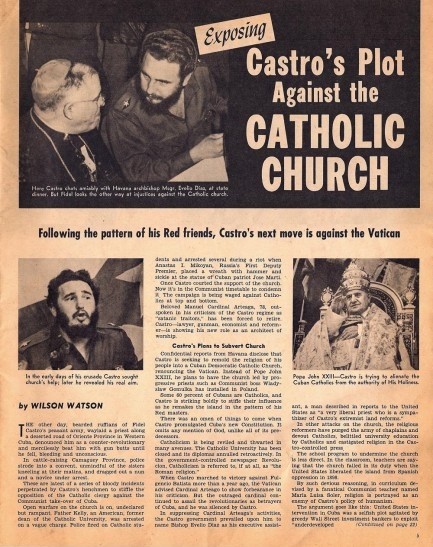
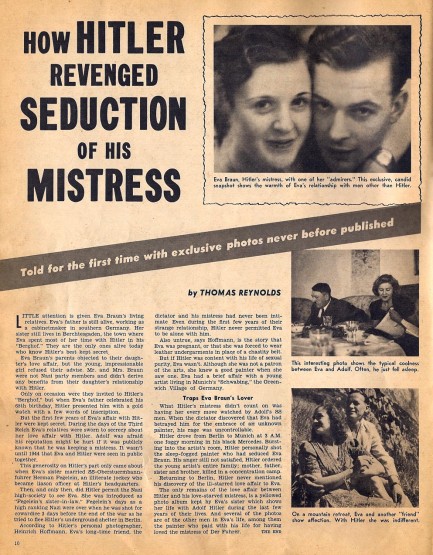
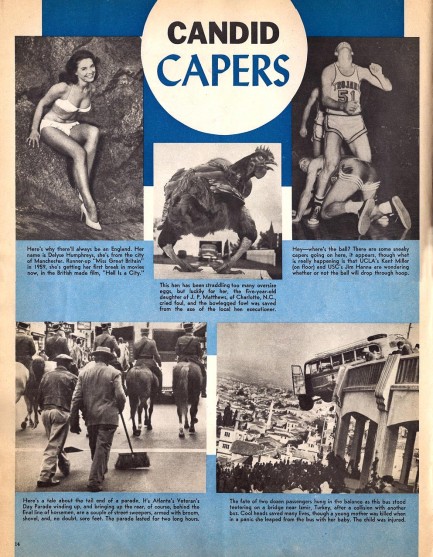
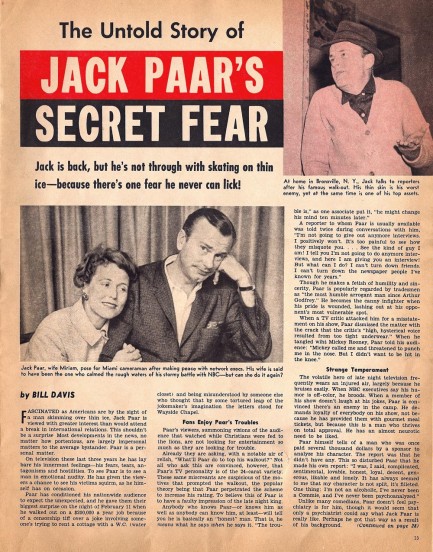
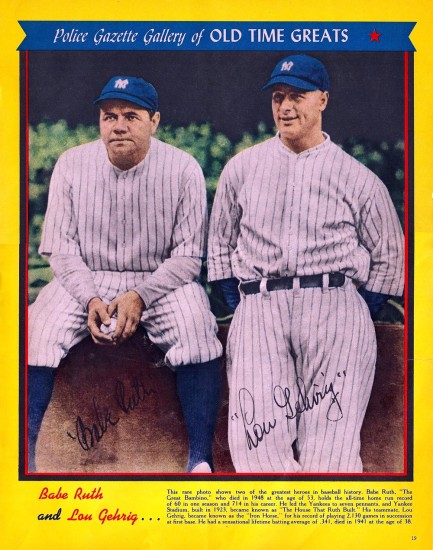
| Intl. Notebook | Politique Diabolique | Mar 19 2012 |

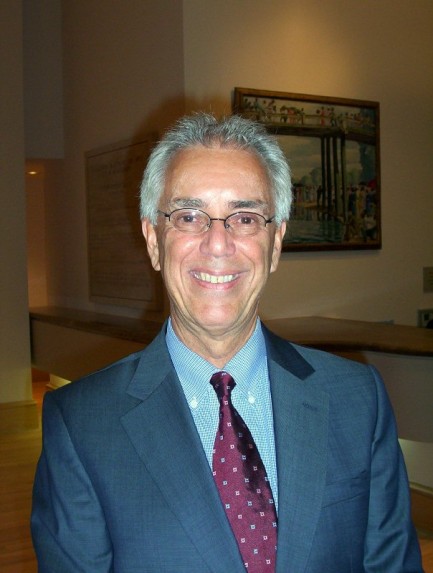
There’s an interesting story emerging today involving former CIA officer Brian Latell, right, who claims that Fidel Castro ordered subordinates to listen carefully for news from Texas on November 22, 1963. That was, of course, the morning U.S. president John F. Kennedy was assassinated, and Latell, who was the CIA’s national intelligence officer for Latin America, says Castro gave the order to put ears to the ground hours before the shooting. Possible? Well, probably quite a few people had advance knowledge of the assassination, so why not Castro? One wonders, though, why Latell, who’s made a nice living of writing about Fidel, appears with this revelation now. Had it slipped his mind for forty-nine years? Surely these claims have nothing to do with goosing sales of his new book Castro’s Secrets? That would be so very… capitalist of him.
Kidding aside, there’s little logic in Castro trying to kill Kennedy. Latell doesn’t make this claim, exactly, though he comes mighty close: “I don’t say Fidel Castro ordered the assassination. I don’t say Oswald was under his control. He might have been, but I don’t argue that, because I was unable to find any evidence for that.” Hmm. We tend to think a presidential killing conceived and orchestrated in the U.S. could be effectively covered up because some of the participants might be government officials able to classify documents, manage the press, pressure investigators, falsify evidence, and so on. But a Cuba-based conspiracy would have none of those advantages, thus the evidence would be there. Glaringly so, we think. Indeed, we can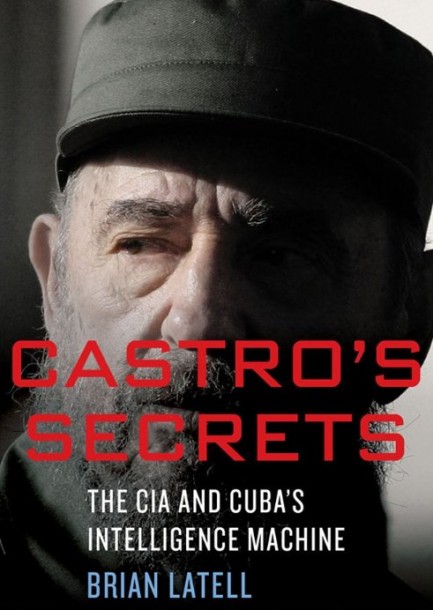 imagine teams of CIA analysts in the days after the murder searching—if not praying—for even the most tenuous Cuba connection in hopes of uncovering a pretext for dispatching a division of marines to Havana. The fact that those marines never embarked says volumes. So we’re going to vote no on the implication that Castro had Kennedy killed. Advance knowledge? Possible. Did he pull the strings? No way. But like millions of Americans, we’d love to know who did.
imagine teams of CIA analysts in the days after the murder searching—if not praying—for even the most tenuous Cuba connection in hopes of uncovering a pretext for dispatching a division of marines to Havana. The fact that those marines never embarked says volumes. So we’re going to vote no on the implication that Castro had Kennedy killed. Advance knowledge? Possible. Did he pull the strings? No way. But like millions of Americans, we’d love to know who did.
| Vintage Pulp | Feb 6 2012 |

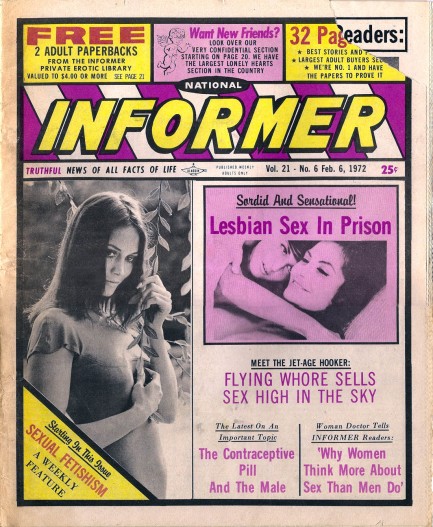
You never want to go too long without a little National Informer in your life, so we’ve brought you another issue of our all-time favorite tabloid, this one published today in 1972. It’s an almost all-sex issue, with articles about fetishism, group sex, lesbian sex in prison, male contraceptive pills, hookers flying the friendly skies, and advanced stimulation methods to drive your partner wild. Mixed in there, in a place where you’d easily overlook it, is a great paste-up photo of Richard Nixon playing chess with Fidel Castro. Chess had something you could almost call mass appeal in the U.S. back in the 1970s, and Castro was a chess aficionado who once hosted a tournament in Havana that drew Mexican Grandmaster Filiberto Terrazas, American Grandmaster and world champ Bobby Fischer, and Soviet-Armenian Grandmaster Tigran Petrosian. So, in the context of the times, the Nixon/Castro composite isn’t as random as it seems. We’ve blown up the photo below, and included other pages of interest.
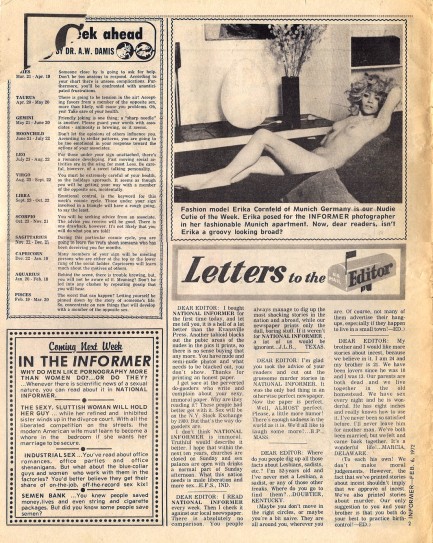
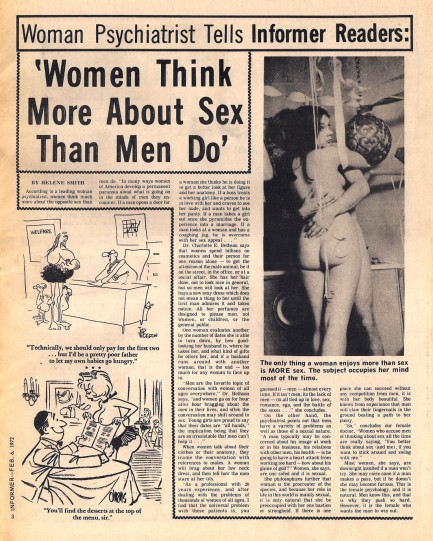
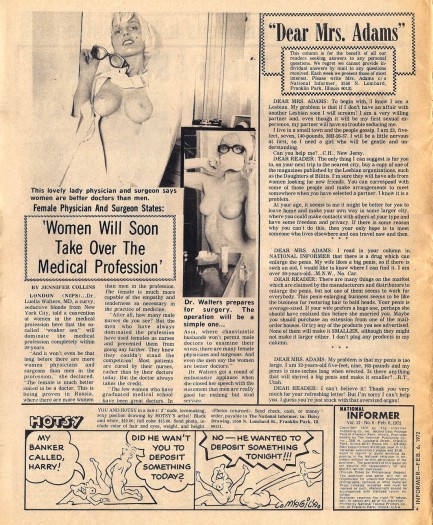
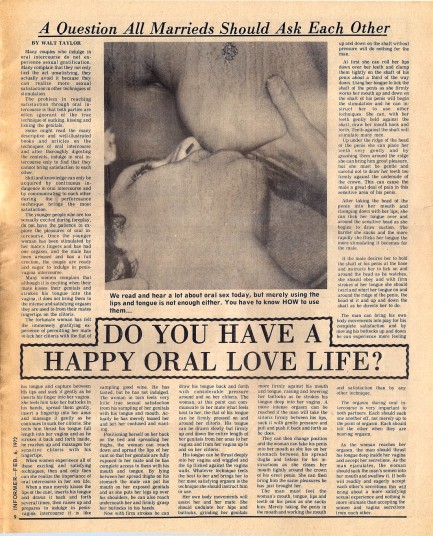
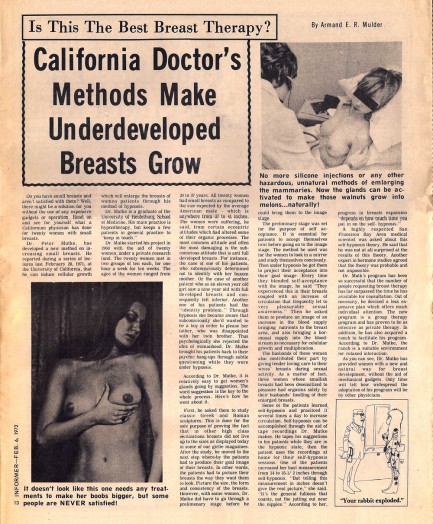
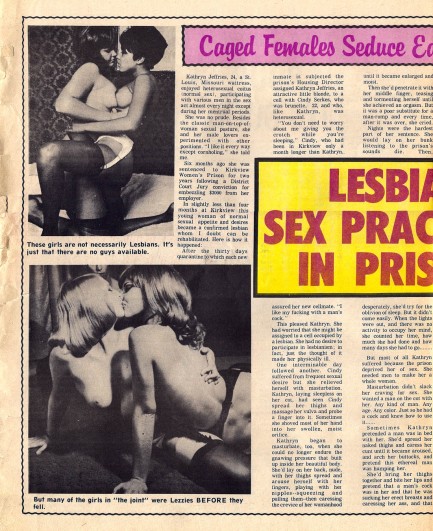
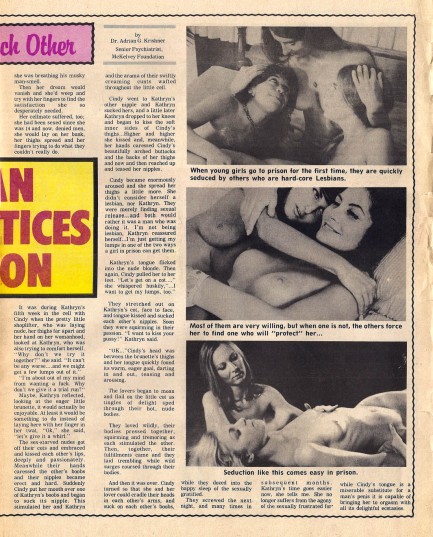
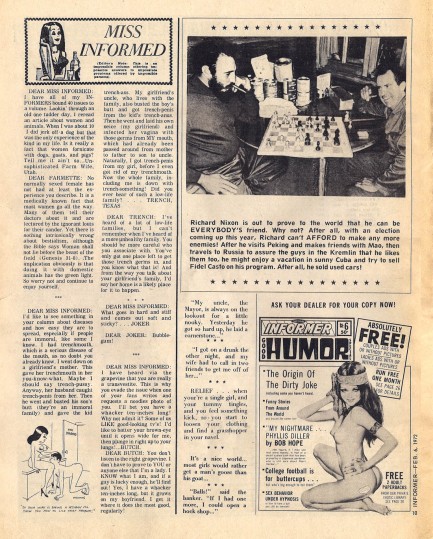
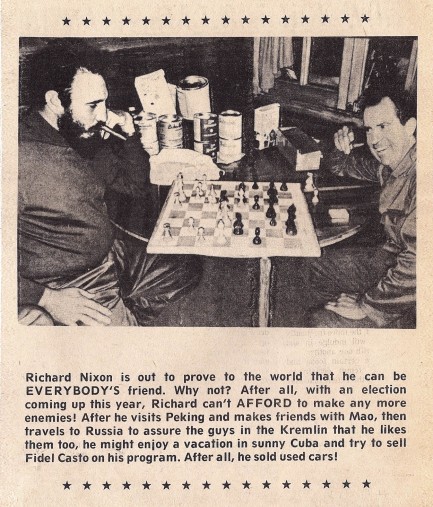
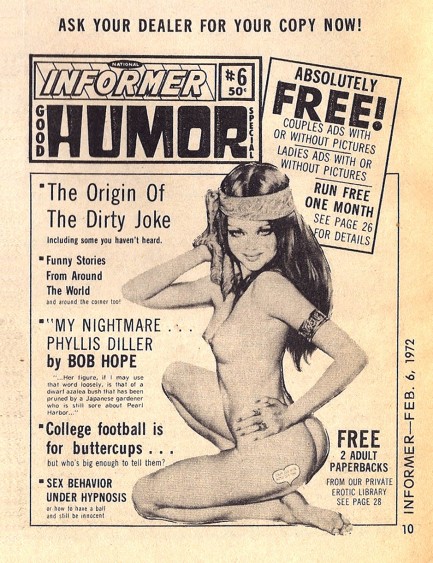
| Intl. Notebook | Sep 19 2011 |

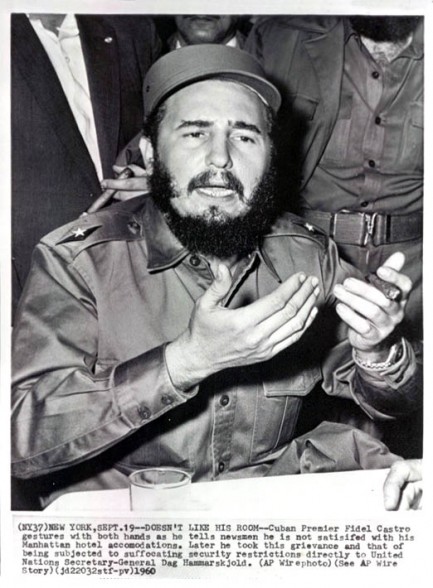
On September 18, 1960 Fidel Castro and his delegation arrived in New York City and, after sleeping at the Shelburne Hotel for one night, were asked for a $10,000 deposit for their twenty rooms after allegedly causing extensive damage. The Cubans either didn’t have it or were insulted by the demand (reports vary), and Castro pointedly expressed his annoyance at a press conference, which is where the above photo was shot fifty-one years ago today.
Castro said that if the situation wasn't resolved he and his delegation would sleep in Central Park. They were poor mountain people, he reminded everyone, and spending a few days outdoors wouldn't be a big deal. But Harlem’s stately Hotel Theresa intervened with an offer of lodging and Castro moved uptown, where he was greeted by cheering crowds of 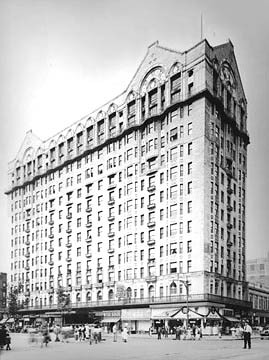 Harlem residents. Some cheered because they supported Castro, or because they saw the move as a rebuke against Manhattan’s white establishment, or both.
Harlem residents. Some cheered because they supported Castro, or because they saw the move as a rebuke against Manhattan’s white establishment, or both.
During his stay at the Theresa, Castro received visits from Soviet premier Nikita Khrushchev and activist Malcolm X. The event prompted President Dwight D. Eisenhower to call the Cubans “troublemakers.” The photo caption, you’ll notice, opts for a simpler narrative, and says only that Castro was dissatisfied with his room at the Shelburne.
 |
 |




































































